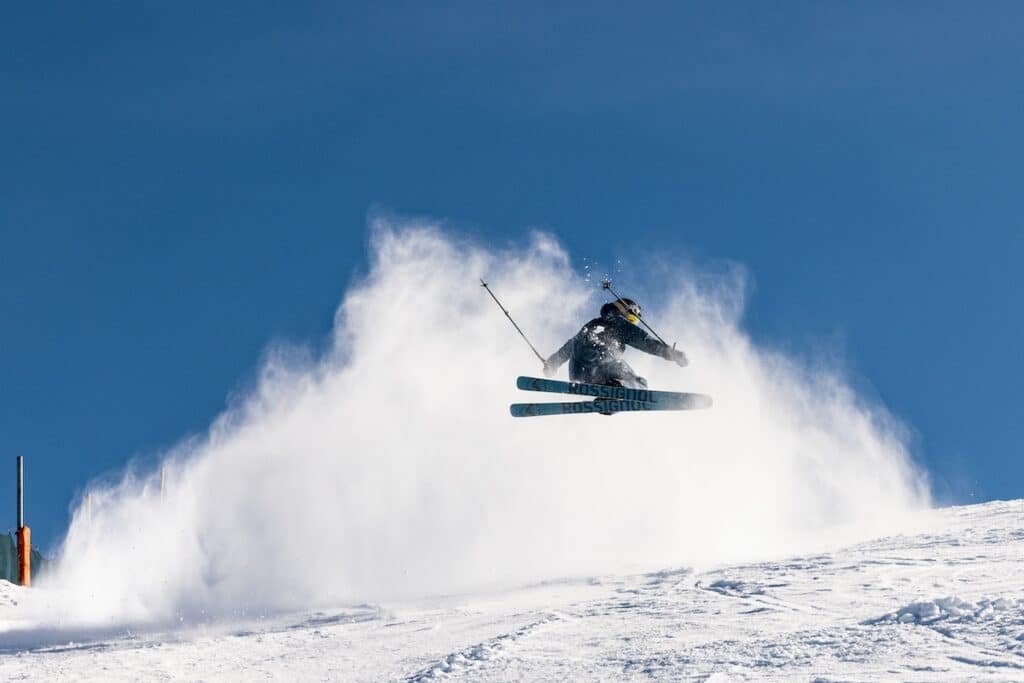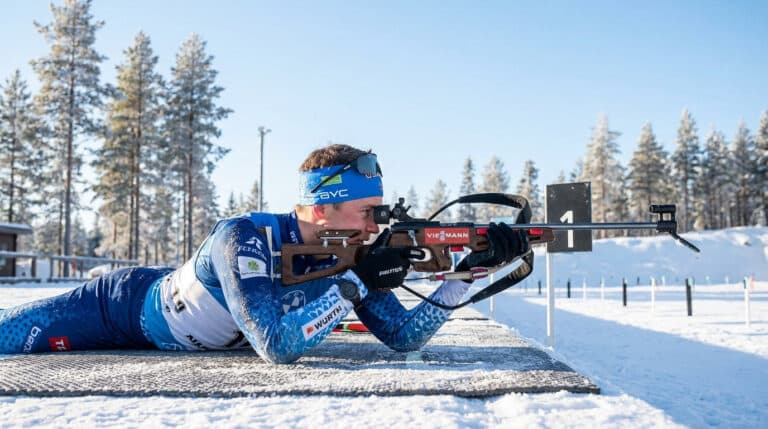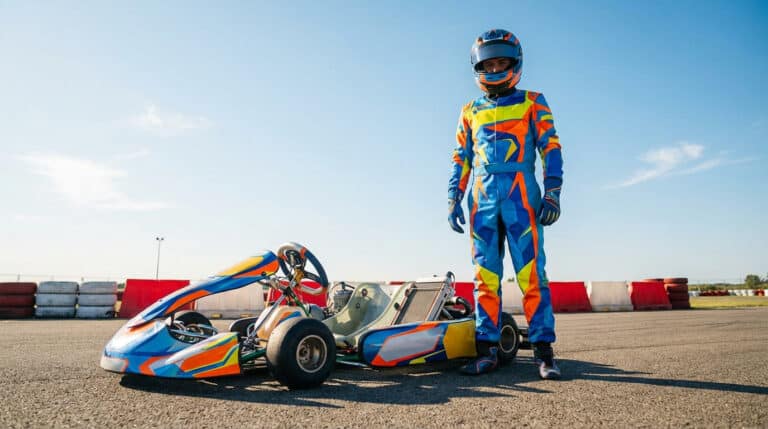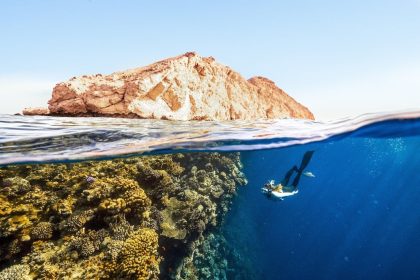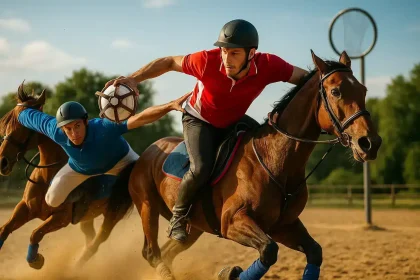Discover the Spirit of Freestyle Skiing
Freestyle skiing is far more than a winter pastime — it’s an art form that combines creativity, athleticism, and pure passion for the mountains. On snow-covered slopes, skiers use their freestyle skis as tools of expression, turning every jump, rail, and rotation into a personal signature. From sculpted halfpipes and terrain parks to backcountry kickers and urban grind spots, this discipline celebrates movement, imagination, and technical precision all at once.
Unlike traditional alpine riding, creative riding invites you to break boundaries. You’re not just descending a piste — you’re interpreting the mountain in your own way, finding rhythm and flow between obstacles, wind lips, and transitions. The ideal pair of twin-tip skis, paired with the correct bindings, boots, and poles, allows for total freedom of movement, enabling skiers to ride forward or switch with equal control. The best equipment isn’t just about comfort — it’s about unlocking new levels of balance, power, and skills.
Whether you’re learning your first spins in a snow park, practising grabs and slides on obstacles, or carving smooth lines through fresh powder, the skis you choose will completely transform your connection to the mountain. Your ski length, flex, and camber-rocker profile determine how your setup responds to landings, impacts, and tight turns — key factors in mastering both style and stability.
To better understand the mindset behind this acrobatic snow sport, we sat down with professional skier Hugo Laugier, who spent six years on the French National Freestyle Ski Team. He shared his insights into how athletes train, what gear makes a real difference on snow, and how beginners can safely progress from simple jumps to competition-level stunts — while still keeping the fun and freedom that define this incredible sport.
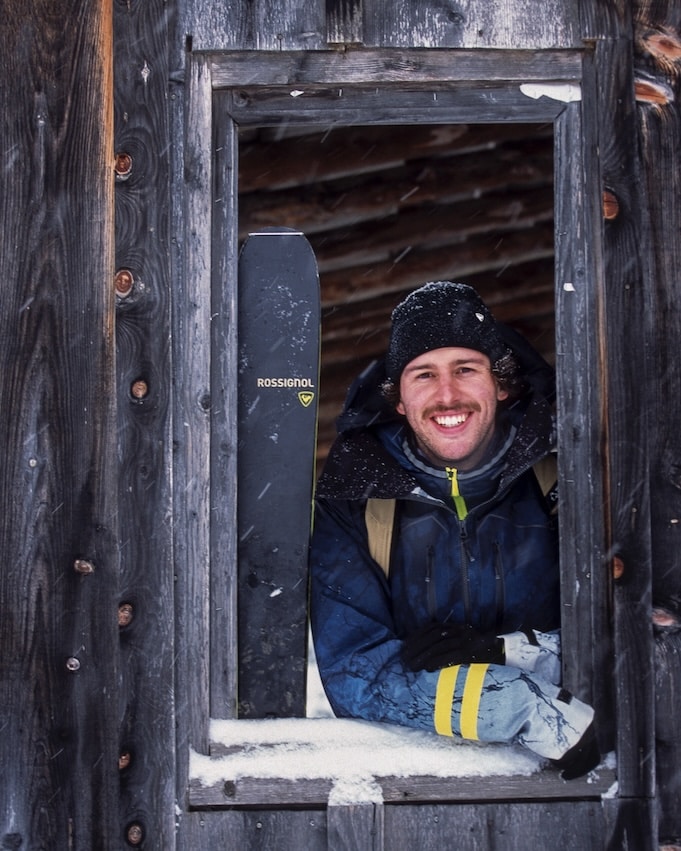
From Racing to Freestyle: The Journey of a Pro
“My adventure on skis began in the late 1990s,” Hugo recalls. “I started out exploring slopes, building my own jumps, and competing at local events. That passion led me to the ski club at Les Deux Alpes, where I learned everything from slalom to downhill. Eventually, I discovered freestyle — and that’s when things really took off.”
In 2015, Hugo joined the French national team, just as this new-school sport was becoming a recognised Olympic discipline. Competing at the European Cup and World Championships, he refined his technical skills and learned how much precision and balance this acrobatic snow sport demands. “Each trick,” he says, “is a mix of control, timing, and creativity — it’s a sport where physics meets freedom.”
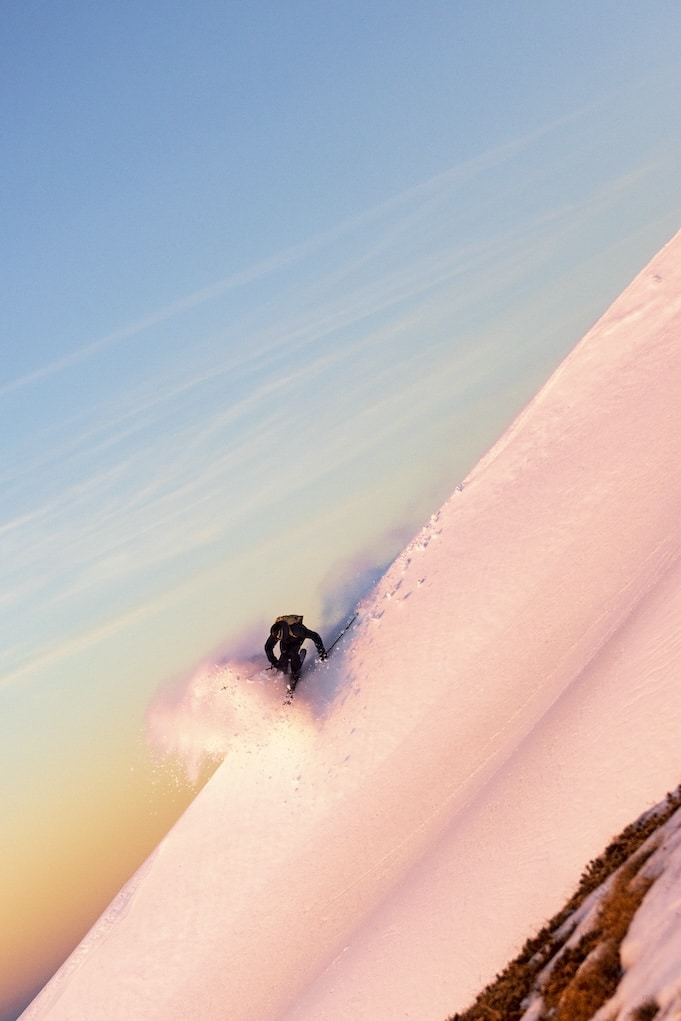
Choosing the Ideal Skis
Selecting the perfect pair of acrobatic skis is one of the most important steps in improving your experience. The appropriate setup will enhance your balance, make stunts easier to land, and allow you to adapt to various terrains — whether you’re spending the day in the snowpark or exploring backcountry jumps. Freestyle skis are designed with twin tips, meaning both ends of the ski curve upward, allowing you to land moves going forward or backward (“switch”) without losing control. This design also improves balance on obstacles, boxes, and during switch take-offs and landings.
A good acrobatic ski also has a softer, more flexible core, which absorbs the impact from jumps, spins, and hard landings. This flexibility gives you more pop and playfulness — essential for progressing your style and control.
Here’s what to look for before making a purchase:
- Skill level: If you’re a beginner, opt for skis that are slightly shorter and more forgiving, making it easier to turn, stop, and recover from mistakes. Intermediate skiers can look for a medium flex ski that offers both stability and versatility, while advanced riders often prefer stiffer models that provide extra power, responsiveness, and precision when landing big tricks.
- Terrain: Your skiing environment determines everything. For park skiing and rails, go for a lightweight ski with a symmetrical shape and even flex distribution. If your passion lies in backcountry or powder sessions, a wider waist (around 100mm or more) and a rocker-camber-rocker profile help you float on soft snow while keeping your turns smooth and controlled.
- Bindings and boots: Don’t overlook these essentials. Bindings must match your weight, boot size, and skill level to ensure consistent release and proper energy transfer. Meanwhile, your boots should provide strong ankle support without restricting movement — too loose, and you lose control; too tight, and you sacrifice comfort.
- Maintenance: Regular care keeps your gear performing like new. Wax your skis frequently to maintain glide, sharpen the edges for better grip on icy snow, and check your bindings for any wear or misalignment. A well-maintained ski setup ensures better safety, smoother landings, and consistent performance on every run.
With the right combination of ski shape, length, and flex, you’ll notice an instant difference in how you handle jumps, spins, and park features — and how much confidence you feel on the mountain.

Freestyle vs. Freeride vs. All-Mountain Skis
At first glance, freestyle, freeride, and all-mountain skis may look similar, but each type is tailored for a very different experience. Understanding their distinctions helps you pick the right equipment for your style and the conditions you’ll encounter on the slopes.
- Freestyle skis are playful, flexible, and agile. Built with twin tips and a centred stance, they allow for switch landings, spins, and rail slides. Perfect for terrain parks, halfpipes, and performing tricks, these skis thrive on creativity. Their soft flex makes them more forgiving when landing jumps, while their symmetrical design keeps balance even during rotations.
- Freeride skis are engineered for off-piste exploration. They’re longer, wider, and more stable, allowing riders to stay afloat in deep powder or backcountry conditions. These skis are ideal for those who love steep lines, cliff drops, and open mountain descents. The stiffer flex and directional shape provide better edge grip and control on unpredictable snow.
- All-mountain skis sit between the two worlds. They’re versatile, built to perform well across groomed pistes, soft snow, and moderate park features. If you like switching between cruising the slopes and occasional park laps, all-mountain skis offer balance, comfort, and versatility.
When choosing, think about how you spend most of your day. If your heart is in the snowpark, go for a freestyle setup. If you love untouched powder or exploring beyond the marked trails, freeride skis will suit you better. And if you want one pair that can do it all, all-mountain models are your best bet.

Reducing the Risk of Injury
Freestyle skiing is thrilling — but it’s also physically demanding and carries a higher risk of falls and impacts. Landing tricks, handling uneven snow, and navigating rails require precision and strength. That’s why proper preparation and protective gear are essential.
Professional skier Hugo Laugier stresses this point:
“In freestyle, injuries are a real risk. A solid training routine, a good warm-up, and protective equipment like helmets, back protectors, and wrist guards are essential. They’ve saved me more than once.”
In addition to protective clothing, technical equipment plays a major role in safety. Make sure your bindings are correctly adjusted to your weight and ability — they should release during a fall but stay firm during aggressive landings. Your boots must fit snugly, giving you the control you need without restricting blood flow. Poles should match your stance and arm length, ensuring you maintain proper posture during jumps and turns.
Beyond gear, take time to stretch and strengthen your muscles before hitting the slopes. Core stability, leg endurance, and balance training reduce the likelihood of injuries during intense sessions. And never underestimate the importance of rest — recovery is part of performance.

Expert Tips from Hugo Laugier
Hugo believes that the secret to great freestyle skiing lies in mastering the fundamentals.
“Before hitting the park, you need strong basics in alpine skiing. Learn to carve, control your speed, and feel comfortable with your edges. Once those skills are second nature, freestyle will feel much more natural.”
He also highlights the value of community:
“Join a ski club or connect with other riders who share your passion. Learning together helps you progress faster, and you can motivate each other through challenges. That’s the real spirit of freestyle skiing — creativity, connection, and shared progression.”
For those looking to advance, Hugo recommends gradually increasing difficulty: start with small jumps, then move on to rails, boxes, and halfpipes as your confidence grows. Record your sessions to analyse your technique and track your progress. And above all, enjoy every moment — freestyle skiing is about freedom as much as performance.

Freestyle Skiing Today: Creativity Meets Adventure
Freestyle skiing continues to evolve with each new generation of athletes. Since stepping away from competition, Hugo Laugier has focused on filming and storytelling through his project La Lodge TV, a web series that connects freestyle skiers from around the world.
“Freestyle skiing keeps evolving — new shapes, new tricks, new ideas. It’s about freedom and passion. Even after leaving the national team, I’m still discovering new ways to enjoy it.”
From kids learning their first jumps to elite athletes competing in the X Games and Winter Olympics, freestyle skiing has grown into a global movement. Ski manufacturers now offer highly specialised equipment — from lightweight park skis to durable freeride models designed for powder, rails, and big air events.
The future of freestyle lies at the intersection of creativity and technology: improved rocker profiles, stronger bindings, and safer boots help reduce impact while enhancing control. Add to that an increased emphasis on safety, performance, and sustainability, and it’s clear that freestyle skiing has never been more exciting.
Before you hit the mountain, make sure you’re equipped with not just the right skis but also the right protection. With Assure Ton Sport, you can enjoy your adventures with confidence — knowing that every jump, turn, and landing is backed by expert coverage designed for passionate skiers like you.
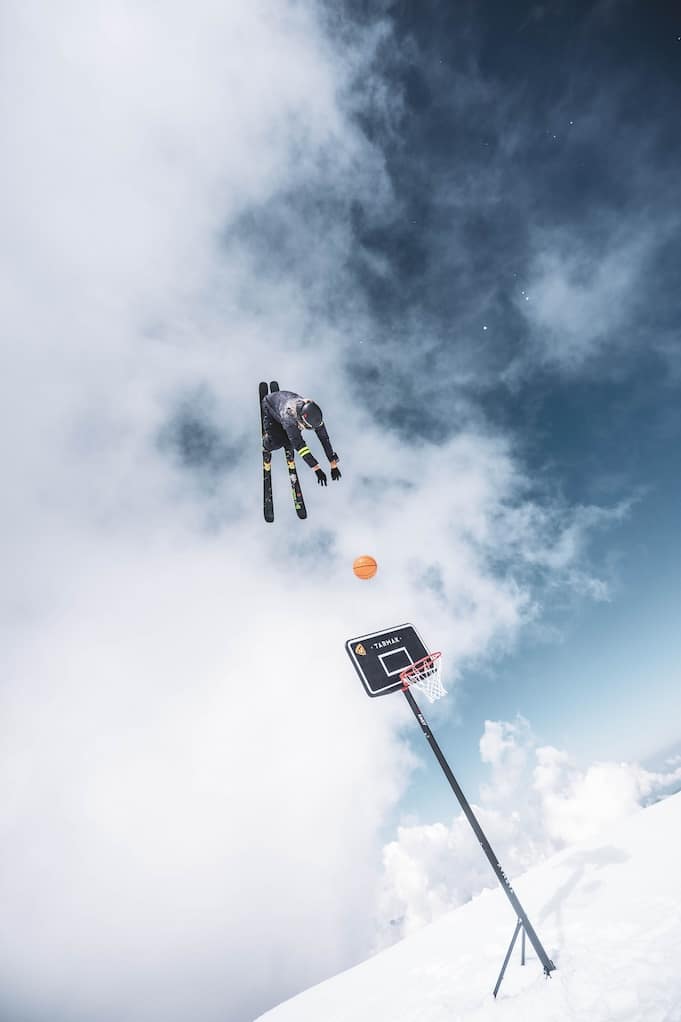
Protect Yourself on Every Slope
Whether you’re carving perfect lines on a groomed piste, landing new tricks in the snowpark, or chasing untouched powder in the backcountry, one thing never changes — the need for reliable protection. Freestyle skiing is all about freedom, creativity, and pushing limits, but every turn, jump, or landing carries a level of risk. The right ski insurance gives you the confidence to explore without hesitation, knowing that your equipment, health, and financial security are fully protected.
With Assure Ton Sport, you can enjoy every day on the mountain with total peace of mind. Our specialist ski insurance solutions are designed for all types of skiers — from beginners discovering freestyle for the first time to professionals training for international competitions. Coverage includes injury protection, medical assistance, equipment repair or replacement, and liability cover in case of an accident. You’re protected on and off the slopes, whether you’re practising tricks in the park, freeriding through deep snow, or teaching your kids their first turns.
We understand that every skier’s needs are different. That’s why our policies are flexible, affordable, and tailored to your lifestyle — offering options for single trips, seasonal coverage, or annual plans that follow you wherever the snow takes you. Our goal is to keep your passion alive while ensuring your safety comes first.
Before your next ride, take a moment to secure your freestyle freedom. Protect yourself, your gear, and your adventures — because great memories on the slopes should never be interrupted by unexpected setbacks.
👉 Discover all our ski insurance solutions on AssureTonSport.com and find the plan that matches your energy, experience, and love for the sport.
